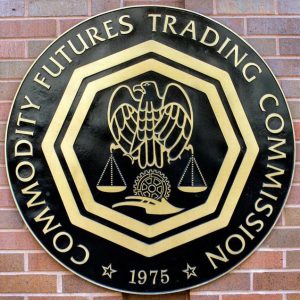While the London Interbank Offer Rate (LIBOR) is notorious for a rate manipulation scandal, that is not even its biggest problem right now.
Sandie O’Connor is the chief regulatory officer at JP Morgan Chase and she was the latest guest on CFTC Talks with Andrew Busch, the Commodities Futures Trading Commission (CFTC) Chief of Market Intelligence.
While LIBOR was indeed involved in a manipulation scandal, O’Connor said the banks and regulators have put in place new protocols which have largely solved that issue, instead, today, LIBOR is rarely traded.
“The market that LIBOR has been seeking to measure; the trading of funding between banks has really declined. There aren’t a lot of transactions at all.
O’Connor said that a change in risk appetite, along with regulation after the financial crisis of 2008 were two main factors in reducing the use of LIBOR.
Many days no trading in LIBOR occurs at all, O’Connor noted.
As such, the rate is set “based on the expert judgment of panel banks, therein is the risk.” O’Connor said.
LIBOR is the rate big banks charge each other to borrow overnight.
While it may appear to be an opaque rate with little to use to the average person, trader included, Busch said its effect is enormous.
Busch said that year approximately $200 trillion notionally worth of these linked contracts are traded including: business loans, floating rate mortgage, futures, cross-currency swaps, FRA’s (Forward Rate Agreements), and interest rate swaps.
It is traded in five currencies- including the dollar.
LIBOR is also what is known as a benchmark rate, meaning it helps set other rates which leads to trillions in trades.
The Alternative Reference Rate Committee was created by the New York Fed to address the financial stability risk if LIBOR went away; O’Connor said she is the chair of the committee.
She noted that the ARRC was a public/private partnership, which engaged the public in roundtables
“We’re trying to address a change in market structure.” O’Connor said.
In April 2018, the Secured Overnight Financing Rate (SOFR) went live.
The SOFR aims to solve many of the deficiencies of LIBOR, namely a lack of trading.
“The SOFR has lots of transactions. In fact, it is 100% transaction based.” O’Connor said.
O’Connor said there were about $750 billion worth of trades in SOFR daily.
“It is an overnight rate, secured. It is a composed treasury-repo rate that spans tri-party repo through Bank of New York, as well as DCS and bi-laterally cleared repo through FIC.” She noted further.
The rate is administered and calculated everyday by the New York Fed.
The CME is just one place which trades a derivative based on SOFR. It currently has trades in one month and three month SOFR futures.
In August, ICE announced a SOFR product also will go live on its exchange on October 1.










